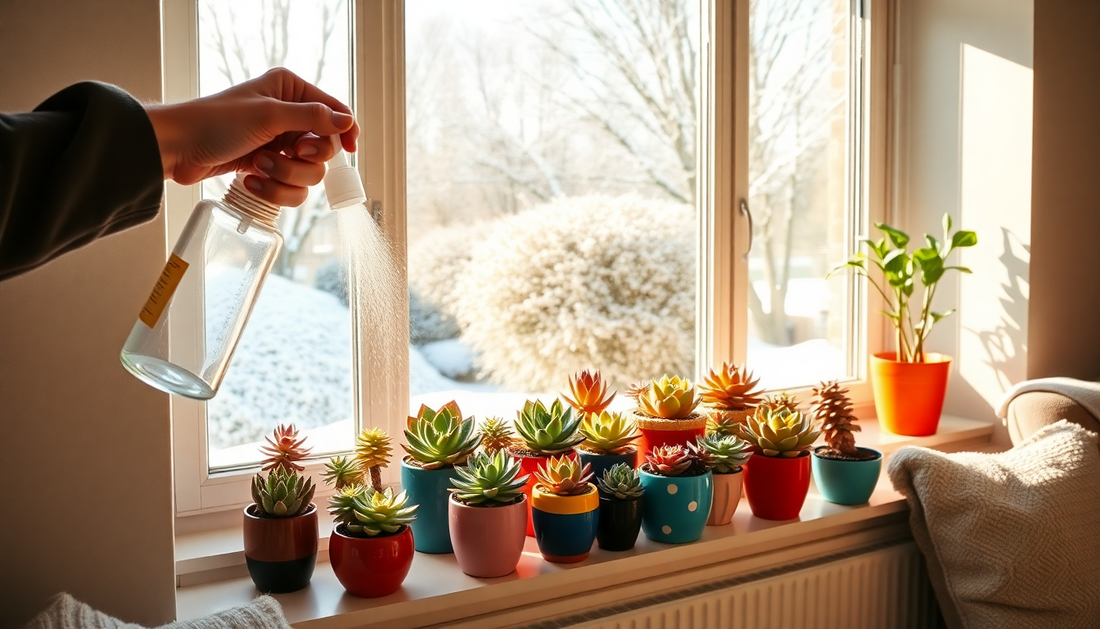
Keeping Your Indoor Succulents Thriving in Winter
Share
As the temperatures drop and the days grow shorter, many plant enthusiasts find themselves wondering how to care for their beloved indoor succulents during the winter months. Succulents, known for their resilience and low-maintenance nature, can still face unique challenges when the weather turns cold. However, with the right knowledge and a few simple adjustments, you can ensure your indoor succulents not only survive but thrive throughout the winter season.
Understanding Succulent Needs in Winter
Succulents are adapted to hot, dry climates, and their care requirements can change significantly when the weather turns colder. In the winter, succulents typically go into a state of dormancy, slowing down their growth and water needs. This is a natural response to the reduced sunlight and cooler temperatures.
During this time, it's important to adjust your watering schedule and provide the right growing conditions to keep your succulents healthy and happy. Overwatering can be a common issue in the winter, as the plants are not actively growing and are more susceptible to root rot.
Adjusting Watering Practices
One of the most critical aspects of caring for indoor succulents in the winter is adjusting your watering routine. As the plants enter their dormant phase, they require much less water than during the growing season.
To ensure your succulents stay healthy, follow these tips for winter watering:
1. Reduce Watering Frequency
Cut back on your watering schedule, aiming to water your succulents only every 2-3 weeks, or even less frequently depending on the specific plant and your indoor environment. The goal is to keep the soil slightly damp, but not soaking wet.
2. Check Soil Moisture
Before watering, always check the soil moisture by sticking your finger into the potting mix. If the soil is still damp, hold off on watering until it has had a chance to dry out a bit.
3. Use Room-Temperature Water
When you do water your succulents, make sure to use room-temperature water. Avoid using cold water, as this can shock the plants and cause further stress.
4. Water Carefully
When watering, be gentle and avoid getting water on the leaves or in the center of the plant. Focus on thoroughly wetting the soil, but be careful not to overwater.
Optimizing Light and Temperature
In addition to adjusting your watering routine, it's essential to provide your indoor succulents with the right light and temperature conditions during the winter months.
1. Maximize Sunlight
Succulents thrive on bright, direct sunlight. During the winter, when daylight hours are shorter, make sure to place your succulents in the sunniest spot in your home, such as a south-facing window. If natural sunlight is limited, consider supplementing with a grow light to ensure your plants get the light they need.
2. Maintain Ideal Temperatures
Succulents prefer cooler temperatures in the winter, typically between 50-70°F (10-21°C). Avoid placing your plants near heat sources, such as radiators or vents, as this can cause stress and lead to etiolation (stretching) of the plants.
3. Provide Good Air Circulation
Ensure your succulents have adequate air circulation to prevent the buildup of moisture, which can lead to fungal issues. Consider using a small fan or opening windows (if the temperature permits) to keep the air moving around your plants.
Fertilizing and Repotting
While your succulents may not be actively growing during the winter, they still have some nutritional needs. However, it's important to use a balanced, low-nitrogen fertilizer and apply it sparingly.
Avoid repotting your succulents in the winter, as this can be a stressful time for the plants. Instead, wait until the spring or early summer when the plants are actively growing and better equipped to handle the stress of being transplanted.
Troubleshooting Common Winter Issues
Even with the best care, your indoor succulents may face some challenges during the winter. Here are a few common issues and how to address them:
1. Etiolation (Stretching)
If your succulents start to stretch or become elongated, it's a sign that they are not getting enough light. Move them to a brighter location or supplement with a grow light.
2. Leaf Discoloration
Discolored or shriveled leaves can be a sign of underwatering or overwatering. Adjust your watering schedule accordingly and monitor the soil moisture levels.
3. Pests and Diseases
Winter conditions can make succulents more susceptible to pests and diseases, such as mealybugs or root rot. Regularly inspect your plants and address any issues promptly.
By understanding the unique needs of indoor succulents in the winter and making the necessary adjustments, you can ensure your plants thrive throughout the colder months. With a little extra care and attention, your indoor succulents will continue to bring a touch of greenery and beauty to your home, even when the weather outside is less than ideal.
Conclusion
Caring for indoor succulents in the winter may require a bit more diligence, but the rewards are well worth the effort. By adjusting your watering practices, providing the right light and temperature conditions, and being vigilant for potential issues, you can keep your beloved succulents healthy and happy all year round. With these tips, you can enjoy the beauty and low-maintenance nature of these hardy plants, even as the seasons change.
So, embrace the winter and dive into the world of indoor succulent care. Your plants will thank you, and you'll be rewarded with a thriving, vibrant indoor garden that brings a touch of nature into your home, no matter the weather outside.
